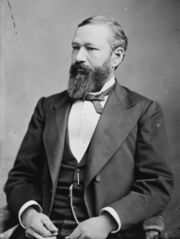The Great Hunger (an Gorta M’or): Ireland 1845-1850
There are many fallacies about the Irish Famine. One of them is that there was no food to be had in Ireland at this time.
In truth, there was plenty of food in Ireland at the time. Many Irish families existed on little but the potato, mixed with a little milk or buttermilk and a few wild onions. But the other crops they grew, which included corn, rye, wheat, etc., was harvested and given to the landlords to pay the rent on their tiny cottages. Failure to do that resulted in their being evicted and their cottages “tumbled” (the thatch was pulled off and the walls knocked down).
Livestock also thrived during the Irish Famine. Aside from corn and grain, the other major export of Ireland during the Famine was livestock.
In Ireland Before and After the Famine, author Cormac O’Grada documents that in 1845, a famine year in Ireland, 3,251,907 quarters (8 bushels = 1 quarter)) of corn were exported from Ireland to Britain. That same year, 257,257 sheep were exported to Britain. In 1846, another famine year, 480,827 swine, and 186,483 oxen were exported to Britain.
Dr. Christine Kinealy, a fellow at the University of Liverpool and the author of two scholarly texts on the Irish Famine: This Great Calamity and A Death-Dealing Famine, says that 9,992 calves were exported from Ireland to England during "Black'47", an increase of thirty-three percent from the previous year. In the twelve months following the second failure of the potato crop, 4,000 horses and ponies were exported. The export of livestock to Britain (with the exception of pigs) increased during the "famine". The export of bacon and ham increased. In total, over three million live animals were exported from Ireland between 1846-50, more than the number of people who emigrated during the famine years.
In later years, the Great Hunger has been referred to as a” planned starvation,” an attempt by the British government to rid itself of the Irish population.
http://www.nde.state.ne.us/SS/irish/irish_pf.html
http://www.ucc.ie/famine/Ireland's%20Famine/bibliography.htm
http://www.fenians-nky.com/hungerhistory.htm










